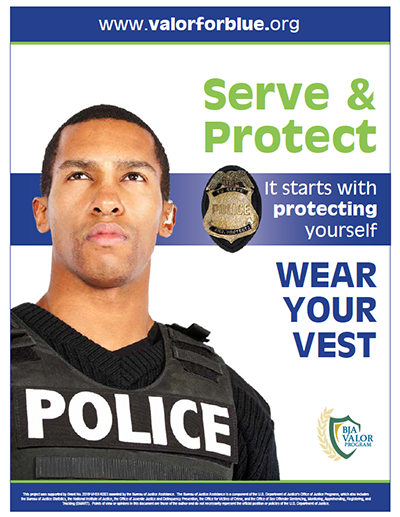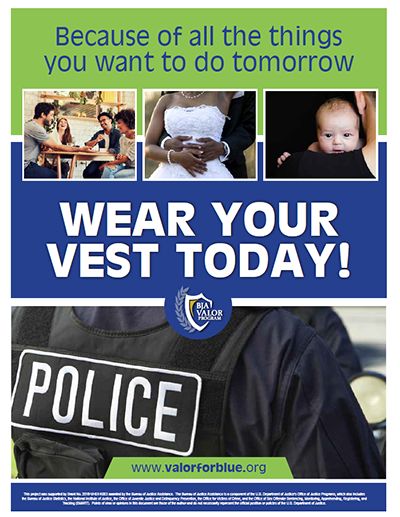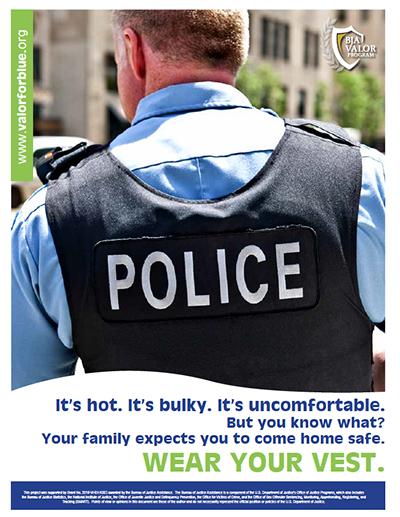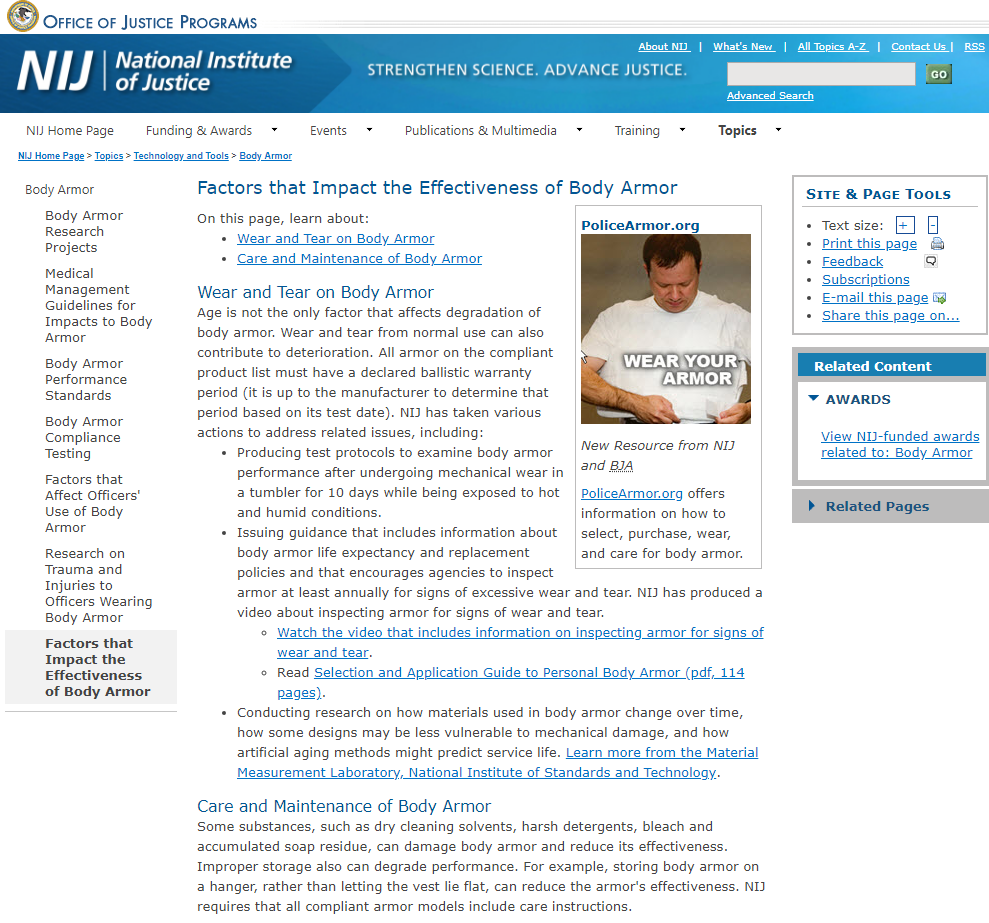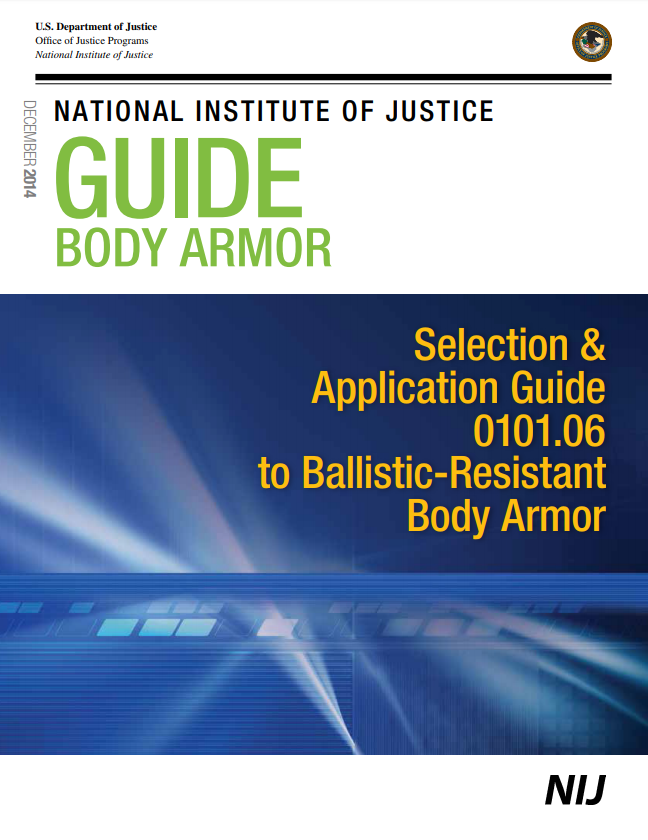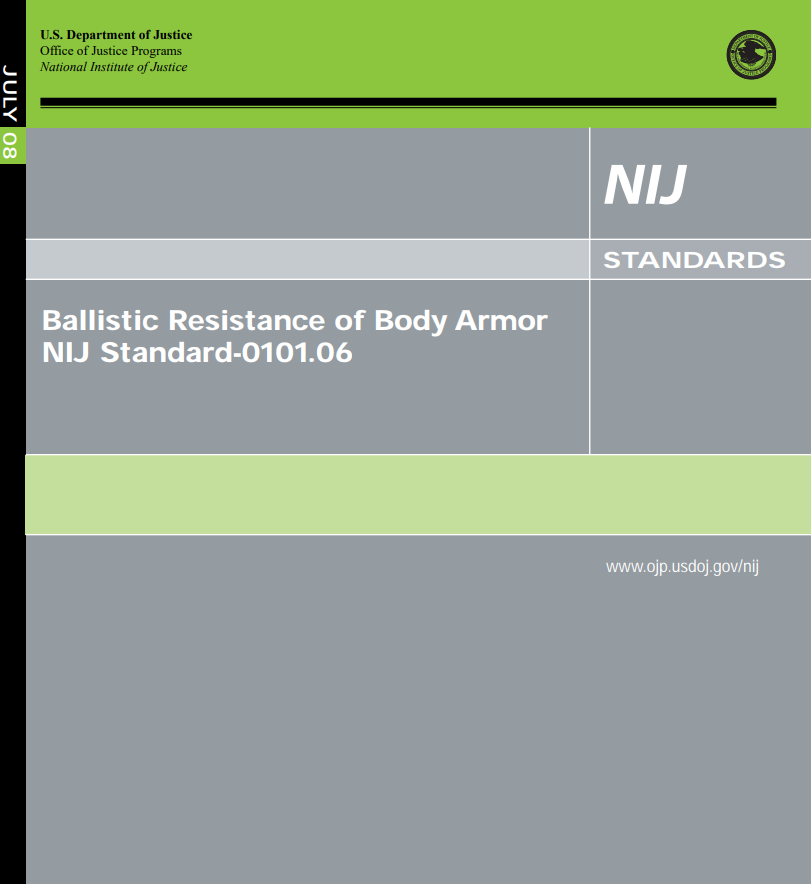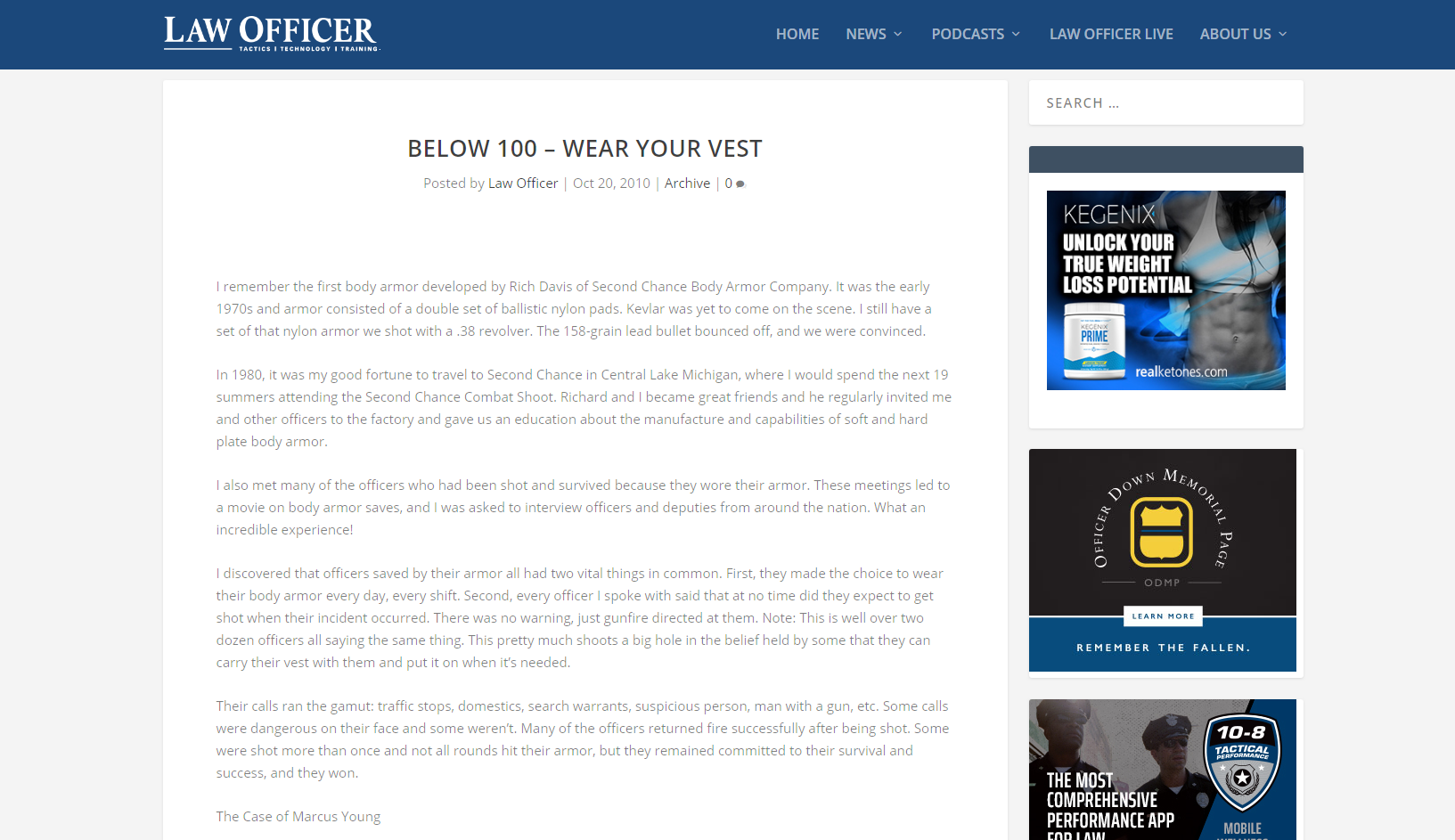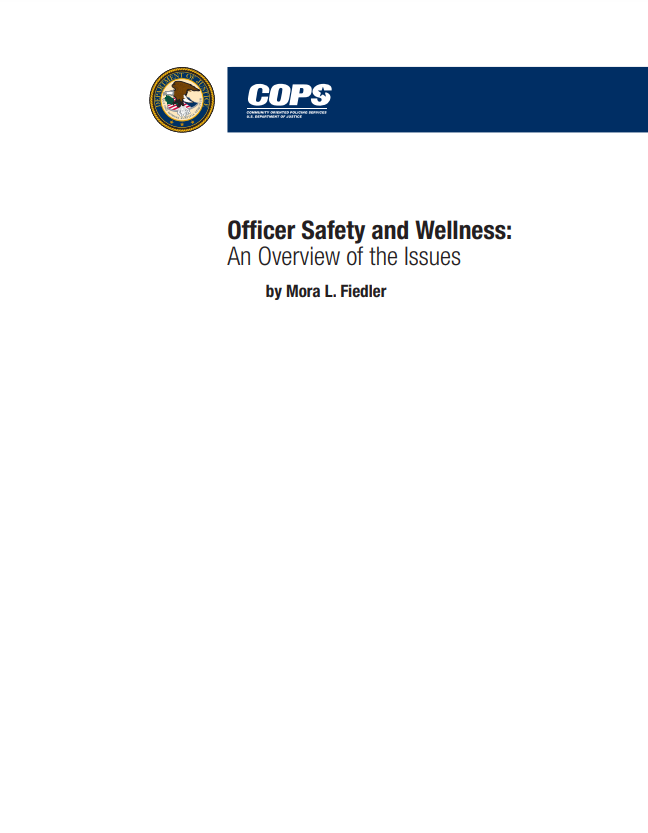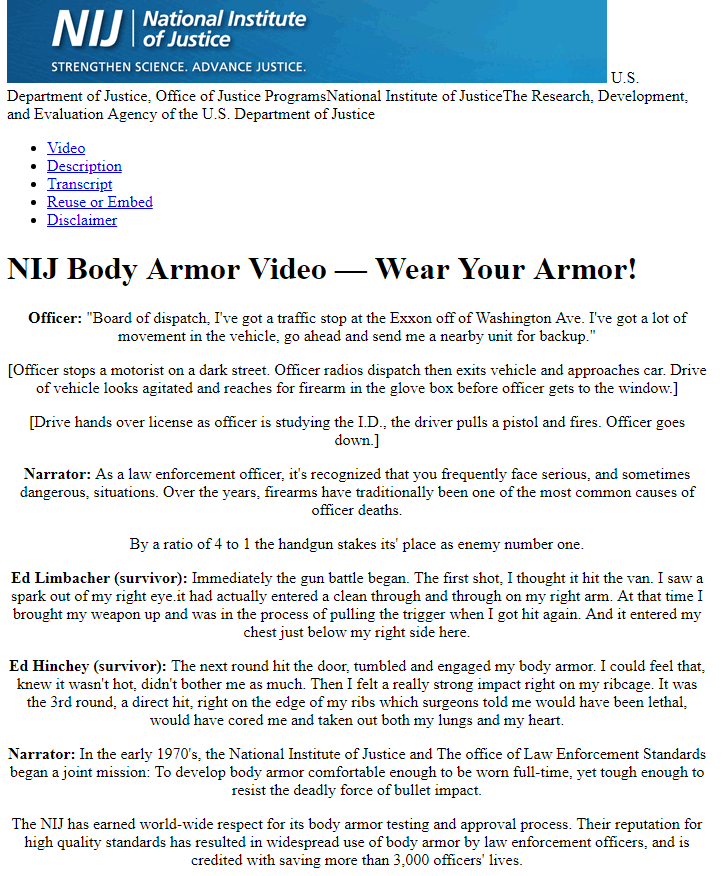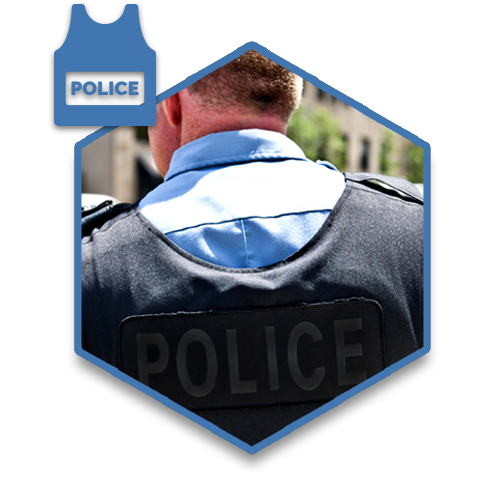
Vest Wear
Bullet-resistant vests are one of the most important investments that you and your agency will make. According to the IACP/DuPont™ Kevlar® Survivors' Club®, bullet-resistant vests have saved the lives of more than 3,100 law enforcement officers and can increase your chances of survival by more than 30%.1 This Spotlight on Safety series provides you with resources emphasizing the importance of not only wearing your vest, but why and how to properly maintain your bullet-resistant vest in order to maximize your safety.
Recommended Fit
Below are the National Institute of Justice (NIJ) recommendations for vest wear:
- The front ballistic panel should be 2½ inches off the top edge of your gun belt when you are standing and no higher than the second button on your uniform shirt. The front panel should extend from just below your jugular notch to two to three finger-widths above the top of your belt when standing.
- When you are standing relaxed with your arms at your side, the back ballistic panel should rest one-quarter to three-quarters of an inch off the top edge of your gun belt and should be no higher than 4 inches down from your collar seam. Having a space between your gun belt and the bottom of the back panel prevents the vest from riding up when you go from a sitting to a standing position.
- To ensure appropriate side coverage for both over-the-uniform and under-the-uniform armors, the sides of your torso armor should always overlap by approximately 2 inches front to back (i.e., the front panel should lie on top of the back panel). This may prevent a bullet from a frontal shot from entering between the panels, traveling inside the back panel, and entering your body. This provides additional protection against near-edge shots and also allows for expansion if you gain weight over time, without creating a dangerous gap.
- Your straps should be just tight enough to prevent excessive movement of the panels. When putting on your vest, secure the straps to the Velcro on the front panel at the first feeling of resistance from the elastic. Overstrapping may cause curling and unnecessary wear of the armor carrier. Most important, when you are in a stressful situation that requires physical exertion, your physical performance will be hindered if your vest is too tight and restricts the ability of your chest and lungs to fully expand when needed. Your vest is too tight if the straps are causing the vest to crease along the strap lines.
Wearing a vest that is properly sized and fitted is critical. While it may be tempting to get a smaller vest for a more snug fit, most officers who do so either end up not wearing their vests or are miserable wearing them. The best solution is to get a true, custom-fitted vest, tailored specifically for your body shape and dimensions. Read JUSTNET's Personal Armor Fit Assessment Checklist .
Proper Care
Below are the NIJ recommendations for proper vest care:
- Your vest should be located on your upper torso, NOT in the car.
- When off-duty, always store your vest in a flat position, without other equipment on or around the vest. Other equipment may get pushed against the side of your vest and can cause curling. Do not hang your vest unless you use a specially designed robust hanger made for body armor. Hanging your vest by traditional methods can easily cause curling and may void the warranty for some vests. It will also prematurely stretch out the elastic in the straps, making them ineffective in properly suspending the panels across your torso. If at all possible, you should always avoid storing your vest in extreme heat or in wet, humid areas.
- Each time you clean your external carrier, you should also clean the outside surfaces of the armor panels using a damp, soapy sponge, along with a mild detergent such as dishwashing liquid, and then allow them to air-dry. Do not submerge your vest in water. Do not use a clothes dryer or hang the panels to dry them, and always avoid exposing them for extended periods to direct ultraviolet (UV) sunlight; simply leaning them up against an upright surface that allows sufficient air flow will do the job, since the panel cover material is water-repellent.
- Regular cleanings provide an excellent opportunity to inspect your vest for any signs of unusual or excessive wear. Particular attention should be paid to any separations in the stitching or sealing of the armor panel; at no time should the “raw” ballistic materials ever be visible. Contact the manufacturer immediately if you should discover this condition so that proper evaluations and repairs can be performed.
- The external carrier also should be inspected for stitching separations on seams and on Velcro pad attachments, as well as for excessive elastic wear. Proper, professional repairs or replacement must be made immediately, should any negative conditions be present.
- Always feel free to contact your vest manufacturer with any questions about the care, maintenance, or condition of your vest. There is absolutely nothing more important than your safety on the job.
Policy
The reason for a mandatory vest wear policy is obvious—law enforcement officers are assaulted every day. A Federal Bureau of Investigation study found that the risk of sustaining a fatal injury for police officers who do not wear body armor is 14 times greater than for officers who do. Firearms-related incidents consistently rank among the leading causes of death among law enforcement officers every year.
Traumatic events are unpredictable, leaving little or no time to put on your vest. For your safety, it is imperative that you be proactive and wear your vest every day.


Shareables
The posters below are available for you to print and post around the office.
Serve & Protect—Wear Your Vest
It starts with protecting yourself.
Wear Your Vest Today!
Because of all the things you want to do tomorrow.
Wear Your Vest
It's hot. It's bulky. It's uncomfortable. But you know what? Your family expects you to come home safe.
Resources
PoliceArmor.org helps law enforcement and corrections officers access information that may save a life— theirs! The Bureau of Justice Assistance (BJA) and the National Institute of Justice (NIJ) have teamed up to offer information on how to select, wear, and care for body armor. PoliceArmor.org is hosted by NIJ’s National Law Enforcement and Corrections Technology Center (NLECTC).
Justice Technology Information Center
Justice Technology Information Center (JTIC) hosts the NIJ Compliance Testing Program for ballistic- and stab-resistant body armor and other officer safety equipment, which conducts equipment testing, reviews and analyzes testing data, and disseminates results. Learn more about standards-based testing . JTIC is a component of the NLECTC.
The Bulletproof Vest Partnership (BVP), created by the Bulletproof Vest Partnership Grant Act of 1998, is a unique U.S. Department of Justice initiative designed to provide a critical resource to state and local law enforcement. Since 1999, the BVP program has awarded more than 13,000 jurisdictions a total of $412 million in federal funds for the purchase of more than one million vests (1,235,593 as of January 2016). The BVP is a critical resource for state and local jurisdictions that saves lives.
DuPont partners with the International Association of Chiefs of Police (IACP) to help promote body armor wear via the IACP/DuPont™ Kevlar® Survivors Club®. This partnership began in 1987 and has honored more than 3,100 officers who have been saved from death or serious injury by wearing body armor. The Survivors’ Club mission is: 1) To reduce death and disability by encouraging increased wearing of personal body armor; 2) To recognize and honor those deserving individuals who, as a result of wearing personal body armor, have survived a life-threatening or life-disabling incident; 3) To serve the law enforcement community by collecting this important data and sharing valuable information relating to these survivor incidents.
International Association of Chiefs of Police (IACP)
The IACP Center for Officer Safety and Wellness focuses on all aspects of an officer’s safety, health, and wellness, both on and off the job. Topics covered by the Center range from mandatory vest and seat belt wear polices to nutrition recommendations and wise financial decision making. The Center wants to ensure that law enforcement professionals have the resources they need to remain healthy and safe.
Factors That Impact the Effectiveness of Body Armor
This resource discusses wear and tear on body armor and how that could impact its effectiveness. It also covers the care and maintenance of body armor to prevent against excessive wear and tear.
This guide has two principal purposes. The first is to inform law enforcement, corrections, and other public safety agencies in the development of sound policies and procedures concerning body armor, from procurement to disposal. The second is to provide officers with a better understanding of the importance of wearing body armor, wearing it correctly, and caring for it properly. This guide is also intended to provide readers with a better understanding of body armor and how it works, explain National Institute of Justice (NIJ) Standard-0101.06 in nontechnical terms, and provide an overview of the voluntary equipment compliance testing program established by NIJ to ensure the effectiveness of body armor sold to law enforcement, corrections, and other public safety agencies.
Ballistic Resistance of Body Armor NIJ Standard 0101.06
This technical document presents NIJ Standard-0101.06, Ballistic Resistance of Body Armor, a minimum performance standard developed in collaboration with the Office of Law Enforcement Standards of the National Institute of Standards and Technology, providing precise and detailed test methods. NIJ Standard-0101.06 establishes minimum performance requirements and test methods for the ballistic resistance of personal body armor intended to protect against gunfire.
There are those who say that “nothing happens here.” Translation: You have not been attacked or in a serious auto crash—yet. Numerous officers have been saved in auto crashes by their armor, so it is not just a gun or edged-weapon threat to be concerned about. We must not allow complacency to be our downfall.
Officer Safety and Wellness: An Overview of the Issues
Now is the time to refocus attention on officer safety, health, and wellness concerns—to discuss and identify best practices in protecting our officers. More than ever, officers need to be able to think and perform with ease and accuracy. Maintaining and investing in officer safety, health, and wellness are the most critical actions that an agency can take.
NIJ Body Armor Video—Wear Your Armor!
Law enforcement officers need proper equipment when they go to work. The NIJ and the NLECTC work together to ensure that body armor standards help officers do their jobs.
References
1IACP/DuPont™ Kevlar® Survivors' Club®.







